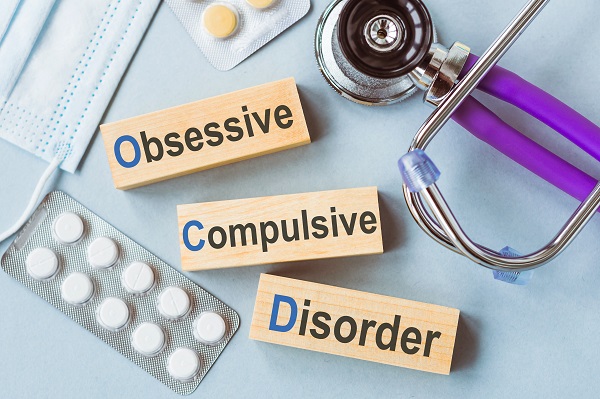If you’re looking for a way to effectively manage Obsessive-Compulsive Disorder (OCD), one of the most promising treatments is exposure therapy. OCD exposure therapy has been used successfully to help many people overcome their debilitating and oftentimes paralyzing anxiety caused by intrusive thoughts and compulsive behavior. In this blog post, we will discuss what exposure therapy is, why it’s effective, and how you can use it for your mental health treatment. We’ll also cover the basics of OCD exposure therapy so that you can start to feel a bit more in control over your obsessive-compulsive disorder.
Contents
- 1 What is OCD?
- 2 What is Exposure Therapy?
- 3 Techniques of Exposure Therapy work for OCD
- 4 How Does Exposure Therapy Work for OCD?
- 5 What Are The Benefits of Exposure Therapy?
- 6 Are There Any Risks Associated With Exposure Therapy?
- 7 How can I find a therapist who specializes in Exposure Therapy?
- 8 Conclusion
What is OCD?

Obsessive-compulsive disorder (OCD) is a mental disorder in which people have unwanted and repeated thoughts, feelings, images, and sensations (obsessions) and engage in behaviors or mental acts (compulsions) in response to these obsessions.
OCD affects children, adolescents, and adults. It occurs in both males and females. The exact cause of OCD is unknown, but it is thought to be due to a combination of genetic and environmental factors.
OCD is characterized by obsessions and/or compulsions that are time-consuming and interfere with daily activities. Obsessions are unwanted and intrusive thoughts, images, or impulses that occur repeatedly and feel out of the person’s control. Compulsions are behaviors or mental acts that the person feels driven to perform to relieve the anxiety caused by the obsession.
Many people with OCD recognize that their obsessions are irrational and their compulsions are excessive, but they cannot control them without help. Treatment for OCD usually includes exposure therapy and/or cognitive behavioral therapy.
What is Exposure Therapy?
Exposure therapy is a type of cognitive behavioral therapy that is used to treat anxiety disorders. It involves exposing the person to the thing they are afraid of, either in real life or in their imagination. The goal is to help the person learn to cope with their fear and ultimately reduce their anxiety.
Exposure therapy can be used to treat a variety of different anxiety disorders, including phobias, panic disorders, and social anxiety disorders. It is usually considered to be the last resort after other treatment methods, such as medication and counseling, have failed.
There are two types of exposure therapy: imaginal exposure and in vivo exposure. Imaginal exposure involves repeatedly imagining the thing you are afraid of until your fear starts to decrease. In vivo exposure involves confronting your fear in real life, such as by going outside if you have agoraphobia or talking to people if you have a social anxiety disorder.
Exposure therapy can be difficult and uncomfortable, but it is effective in treating anxiety disorders. If you think exposure therapy might be right for you, talk to your doctor or mental health professional.
Techniques of Exposure Therapy work for OCD

Many different types of exposure therapy are used to treat OCD. Some of these are:
Systematic Desensitization
The most common type of exposure therapy is systematic desensitization, also known as graduated exposure or virtual reality therapy. Systematic desensitization involves gradually exposing the patient to anxiety-provoking stimuli in a controlled environment and teaching them relaxation techniques to help cope with their discomfort. This type of exposure can be done in a variety of settings, including in-person with a therapist or at home using virtual reality technology.
In Vivo Exposure
In vivo exposure involves exposing the patient to real-life situations that trigger their anxiety symptoms. This type of exposure therapy can help the patient become accustomed to their fear triggers and learn how to manage their anxiety. This type of exposure is often done in combination with other cognitive-behavioral therapies, such as cognitive restructuring and mindfulness.
Flooding
Flooding is a more intensive type of exposure therapy where the patient is exposed to their fear triggers all at once. This can be done with virtual reality or by having the patient face their fear directly in real life. While it can be overwhelming, flooding is effective for some people suffering from OCD.
Imaginal Exposure
Imaginal exposure involves having the patient visualize or imagine scenarios that cause anxiety and stress. The therapist will guide them through these situations and help them identify which thoughts and feelings come up for them during each step. They may also help the patient modify their thoughts to reduce the intensity of their anxiety.
Social Exposure
Social exposure involves helping the patient become comfortable in social situations. The therapist will work with the patient on developing communication skills, addressing specific fears or anxieties related to social interactions, building support systems, and learning how to manage stressors in social situations.
Exposure therapy is a powerful tool for helping people manage their OCD symptoms and lead happier healthier lives.
How Does Exposure Therapy Work for OCD?
Exposure therapy is a type of cognitive behavioral therapy that is used to treat many different types of mental disorders, including OCD. The goal of exposure therapy is to help the individual learn to control their anxiety and fear response by gradually exposing them to the thing they are afraid of. The exposure can be done in several different ways, including imaginal exposure, in which the individual imagines the feared situation, and in vivo exposure, in which the individual faces fear.
Exposure therapy is an effective treatment for OCD, with many people reporting a decrease in their symptoms after completing exposure therapy. One study found that 80% of people who underwent exposure therapy for OCD no longer met the criteria for OCD after treatment (Abramowitz et al., 2005). Exposure therapy can be a difficult treatment to undergo, as it can be very uncomfortable and scary to face one’s fears. However, it is often necessary to help the individual gain control over their anxiety and OCD symptoms.
The working of exposure therapy for OCD is based on the principle of habituation. Through a process of repeated exposure to fear-inducing stimuli, people learn that their response to the stimulus is not necessary and that they can control their fear and anxiety. The goal is for the person to eventually become desensitized to the feared object or situation and be able to approach it without triggering an excessive emotional response.
What Are The Benefits of Exposure Therapy?

Exposure therapy is an effective treatment for OCD that can help people to overcome their fear of certain situations, objects, or thoughts. By gradually exposing themselves to the thing they are afraid of, people can learn to control their anxiety and eventually conquer their fear.
There are many benefits of exposure therapy, including:
Helps To Overcome Fears
One of the most common benefits of exposure therapy is its ability to help people overcome their fear. By gradually exposing themselves to the feared situation, object, or thought, people, can learn to tolerate the fear and eventually conquer it. Also, this type of therapy can help people to become more confident in their ability to handle the situation.
Reduces Anxiety
Exposure therapy can also reduce anxiety over time as people become more familiar with the feared object or situation. This reduction in anxiety helps people to cope better with the things they are afraid of and, eventually, be able to face them without feeling anxious or fearful.
Improves Quality of Life
Exposure therapy can also improve quality of life by allowing people to overcome fears that have been limiting them for a long time. By conquering their fears, individuals can regain control over their lives and start participating in activities that may have been difficult or impossible before. The quality of life of a person can greatly improve when they are no longer held back by their fear.
Helps To Develop New Skills
Exposure therapy also helps people to develop new skills, such as problem-solving and relaxation techniques. Developing these skills can help people better manage their anxiety in future situations and be better prepared for the things they are afraid of.
Are There Any Risks Associated With Exposure Therapy?
Yes, there are some risks associated with Exposure Therapy for OCD. The most common risk is anxiety or distress during the exposure exercises. It is important to remember that the goal of exposure therapy is to help you learn to manage your anxiety and not to make it worse. Other risks include:
Feeling overwhelmed by the exposures
One of the goals of exposure therapy is to help you confront your fears, which can make it difficult to complete the exercises if you become too overwhelmed with fear or anxiety.
Triggering unwanted memories
When doing exposure exercises, you may come across memories that are difficult for you to deal with. It is important to have support from a therapist or trusted friend so that these memories can be processed safely and healthily.
Negative reinforcement
Exposure therapy is meant to help you learn how to manage your anxiety, but if it’s not done correctly, it could increase your fear and anxiety levels. This is because the goal of exposure therapy is not just to bring up anxious thoughts and feelings, but also to help you learn how to find ways of managing them in the long term. If the exposure exercises are done incorrectly or too quickly, this could result in negative reinforcement of anxious thoughts and behaviors.
Feeling like you are not making progress
Also, some people may feel like they are not making progress with their exposure therapy, which can lead to feelings of discouragement and frustration. Some of the goals of exposure therapy are to gain some control over your fears and anxieties, but it can take time and patience to see results.
How can I find a therapist who specializes in Exposure Therapy?
There are a few different ways to find a therapist who specializes in exposure therapy. One way is to ask your regular doctor for a referral. Another way is to search online for therapists who specialize in exposure therapy or OCD treatment. You can also check with your insurance company to see if they have any recommendations.
Once you’ve found a few potential therapists, it’s important to do your research and make sure they are a good fit for you. Make sure they have experience treating OCD and that they use evidence-based treatments like exposure therapy. Also, be sure to ask about their success rates and what kind of support they offer after treatment.
Some of the other ways you can find a therapist include asking friends and family for recommendations, researching therapists in some directories, and contacting local mental health clinics or organizations. There are also organizations such as the Association for Behavioral and Cognitive Therapies (ABCT) that provide information about evidence-based treatments and therapists.
Conclusion
OCD Exposure Therapy has proven to be an effective treatment for those struggling with OCD. It gives them the tools and skills needed to manage their symptoms and live a more productive life. It is important that before beginning any therapy, one researches the type of therapy they are seeking out and finds a therapist who specializes in this form of treatment. With the right guidance, individuals can make positive changes in their lives by confronting their obsessions and compulsions head-on.
For more information and guidance, please contact OCDMantra. OCD is a mental health disorder characterized by obsessions and compulsions. If you have any queries regarding OCD treatment, ERP therapy experienced therapists at OCDMantra can help: Book a trial OD therapy session.


